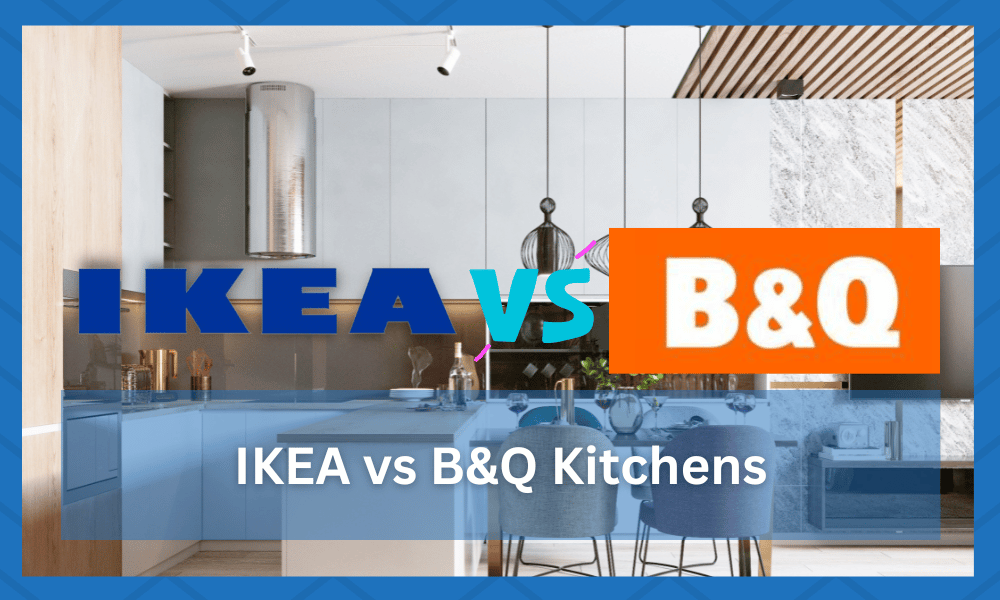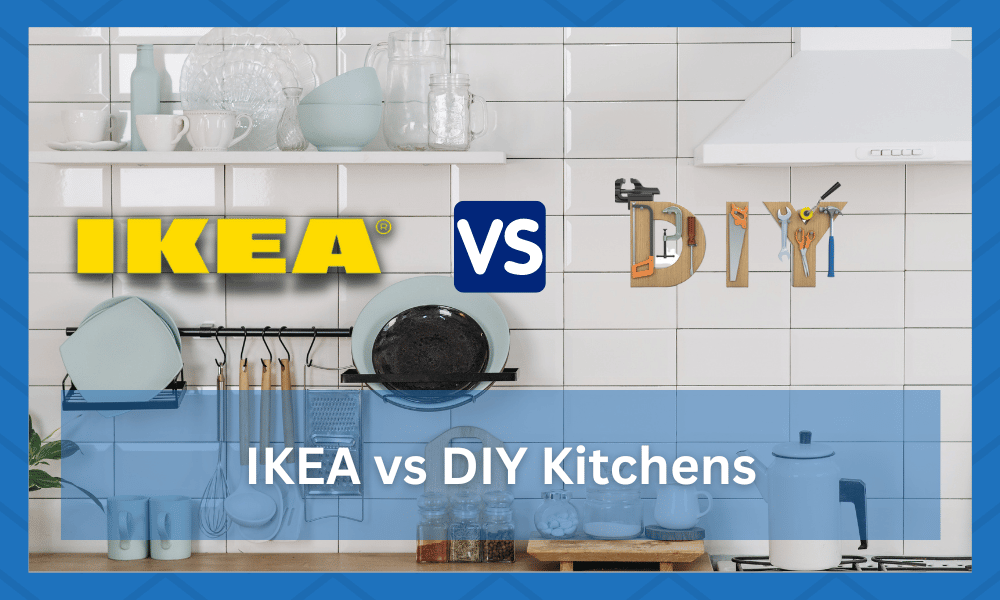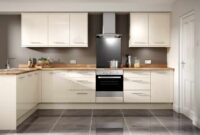Cost comparison: IKEA vs. high-end German kitchen brands – a seemingly simple question with surprisingly complex answers. Choosing a kitchen is a significant investment, impacting both your home’s aesthetic and your wallet. This comparison dives into the price differences, material quality, features, and long-term value of these two distinct approaches to kitchen design, helping you make an informed decision for your needs and budget.
We’ll explore the spectrum of options, from IKEA’s budget-friendly offerings to the luxurious, bespoke creations of German manufacturers. We’ll examine the trade-offs involved, considering factors like material durability, customization possibilities, and the overall cost of ownership. By the end, you’ll have a clearer understanding of which type of kitchen best suits your lifestyle and financial considerations.
Price Point Comparison
Choosing a new kitchen involves navigating a vast price spectrum, from budget-friendly options to luxury investments. This comparison focuses on the significant price differences between IKEA kitchens and high-end German brands, examining what you get for your money in terms of features and materials. Understanding these variations is crucial for making an informed decision that aligns with your budget and desired aesthetic.
Average Price Ranges for Complete Kitchen Sets
The cost of a complete kitchen varies dramatically depending on the brand, chosen materials, and the complexity of the design. While exact figures fluctuate based on market conditions and specific choices, we can establish general price ranges to illustrate the differences.
| Brand | Average Price Range (Low-High) | Key Features Included | Notable Material Differences |
|---|---|---|---|
| IKEA | $3,000 – $15,000 | Basic cabinets, countertops, and appliances; some customization options. | Particleboard, laminate, and melamine are common; solid wood options available at higher price points. |
| SieMatic | $30,000 – $100,000+ | High-end cabinetry with extensive customization options; premium appliances; often includes installation. | Solid wood, high-pressure laminate, and other premium materials; specialized finishes and hardware. |
| Bulthaup | $50,000 – $200,000+ | Minimalist designs; highly customizable cabinetry; top-of-the-line appliances; sophisticated installation and project management. | Premium materials like solid wood, stainless steel, and Corian; often features integrated appliances. |
| Poggenpohl | $40,000 – $150,000+ | Modern and classic designs; customizable cabinetry; high-quality appliances; extensive design services. | A range of materials, including solid wood, lacquer, and stone; high-end hardware and finishes. |
Cost Variations Within Brand Product Lines
Within each brand’s offerings, a wide range of prices exists. IKEA’s lower-end lines utilize particleboard and laminate, offering a functional but less durable solution. Their higher-end options incorporate solid wood and more refined finishes, resulting in a significantly higher price tag. Similarly, German brands offer entry-level lines with simplified designs and less expensive materials, while their premium offerings boast bespoke designs, luxurious materials, and advanced features.
Examples of Specific Kitchen Models
For example, IKEA’s SEKTION system provides a basic, customizable kitchen at a lower price point, while their METOD system allows for more design flexibility and higher-quality materials at a premium. In contrast, SieMatic’s PURE style offers a sleek, minimalist design at a mid-range price point, while their URBAN collection showcases more elaborate features and high-end materials at a significantly higher cost.
Bulthaup’s b2 system is known for its minimalist design and high-end materials, representing the top tier of their offerings. Poggenpohl’s +VENICE collection is an example of a more classic and traditional style within their portfolio, showcasing high-quality materials and design.
Material and Construction Differences

Source: myikeabedroom.com
IKEA and high-end German kitchen brands employ significantly different approaches to material selection and construction, resulting in noticeable variations in quality, durability, and overall lifespan. This difference is reflected in the price point, with German brands commanding a premium for their superior materials and craftsmanship. Understanding these distinctions is crucial for making an informed decision based on individual needs and budget.
The core differences lie in the materials used for cabinets, countertops, and appliances. German brands often prioritize solid wood, high-pressure laminates, and premium materials for their appliances, while IKEA frequently utilizes engineered wood, particleboard, and more budget-friendly appliance options. This choice of materials directly impacts the kitchen’s durability, resistance to damage, and overall aesthetic appeal.
Cabinet Materials and Construction
Cabinet construction is a key differentiator. German manufacturers often use solid wood or high-quality plywood for cabinet boxes, ensuring strength and stability. IKEA, on the other hand, predominantly uses particleboard or engineered wood, which, while cost-effective, is less durable and prone to damage from moisture and impact. The door and drawer fronts also differ significantly. German brands often use real wood veneer or high-gloss lacquered finishes, while IKEA typically uses melamine or foil finishes, which are less resistant to scratches and wear.
Countertop Materials and Durability
Countertop materials also reveal significant differences. German kitchens often feature high-end options like natural stone (granite, marble), quartz, or engineered stone, known for their durability, heat resistance, and elegant appearance. These materials are more expensive but offer superior performance and longevity. IKEA countertops are more commonly made from laminate, butcher block, or less expensive engineered stone, which are susceptible to scratches, stains, and heat damage.
While laminate is relatively easy to clean, its lifespan is generally shorter than that of natural stone or high-quality engineered stone.
Appliance Quality and Features
The appliances included in a kitchen are another area where the two differ. German brands often partner with or utilize their own high-end appliance lines, offering features like advanced technology, superior energy efficiency, and longer warranties. These appliances are typically built to last and perform optimally for many years. IKEA appliances, while functional, are generally less expensive and may lack some of the advanced features and durability of their German counterparts.
They often come with shorter warranties, reflecting their lower price point.
Material Comparison Table
| Component | IKEA Typical Materials | German Brand Typical Materials |
|---|---|---|
| Cabinet Boxes | Particleboard, Engineered Wood | Solid Wood, High-Quality Plywood |
| Cabinet Doors/Fronts | Melamine, Foil, Laminate | Real Wood Veneer, Lacquered Wood, High-Gloss Finishes |
| Countertops | Laminate, Butcher Block, Less Expensive Engineered Stone | Granite, Marble, Quartz, High-End Engineered Stone |
| Appliances | Budget-Friendly Options, Shorter Warranties | High-End Appliances, Advanced Features, Longer Warranties |
Features and Functionality Comparison
IKEA and high-end German kitchen brands offer vastly different features and functionality, reflecting their contrasting price points and target markets. While IKEA prioritizes affordability and ease of assembly, German brands emphasize premium materials, sophisticated engineering, and highly customizable designs. This comparison highlights key differences in standard features, cabinet organization, and appliance integration.
The core functionality of a kitchen – storing food, preparing meals, and cleaning up – remains consistent across both brands. However, the way these functions are executed differs significantly. This difference stems from variations in the quality of components, the level of customization, and the overall design philosophy.
Standard Features in Base-Model Kitchens
A base-model IKEA kitchen typically includes melamine or foil-wrapped particleboard cabinets, standard soft-close drawer slides, and basic hinges. Door styles are usually limited to a few simple options, often featuring flat panels or simple shaker designs. In contrast, a base-model German kitchen will usually feature higher-quality materials such as solid wood or lacquered MDF cabinets, premium soft-close drawer slides with integrated dampening systems, and more robust, adjustable hinges.
Door styles offer a wider variety, including more elaborate frameless designs and intricate detailing.
Cabinet Organization and Appliance Integration
IKEA kitchens offer functional storage solutions, but the level of customization is limited. Internal organization is often basic, relying on standard shelves and drawers. Appliance integration is straightforward, but may not be as seamless or aesthetically integrated as in high-end German kitchens. German brands, on the other hand, often provide highly customizable cabinet interiors with specialized features like pull-out spice racks, integrated waste bins, and custom-sized drawers designed for specific kitchen tools.
Appliance integration is typically more sophisticated, with options for fully integrated appliances that seamlessly blend with the cabinetry.
Specialized Features in High-End German Kitchens
High-end German kitchens often boast features rarely found in IKEA kitchens. These include features such as: advanced drawer systems with internal dividers and organizers; blumOTION or similar high-end soft-close systems; tilt-out corner cabinets that maximize storage in often-wasted space; integrated lighting within cabinets and under-cabinet lighting options; and customizable cabinet heights and depths to perfectly fit the user’s needs and appliances.
These specialized features significantly enhance both the functionality and the aesthetic appeal of the kitchen.
Customization and Design Options

Source: myikeabedroom.com
Choosing a kitchen involves a significant design element, and the level of customization offered varies dramatically between IKEA and high-end German brands. While both offer a range of options, the approach and extent of personalization differ considerably. This section will explore the customization options, design processes, and overall flexibility offered by each.
IKEA and German kitchen brands cater to different design preferences and budgets. IKEA prioritizes affordability and accessibility through a standardized system, while German brands emphasize bespoke design and high-end materials, often involving extensive collaboration with designers and installers. This difference fundamentally shapes the customization possibilities.
Cabinet Sizes and Finishes
IKEA provides a limited, yet comprehensive, selection of pre-designed cabinet sizes and finishes. Their system relies on standardized modules, allowing for efficient production and assembly. While you can’t create entirely unique cabinet dimensions, a wide array of colors, materials (like wood veneer, laminate, and acrylic), and door styles are available, offering sufficient variety for many projects. German brands, conversely, offer virtually unlimited cabinet sizing and a much broader spectrum of finishes, including bespoke options such as hand-painted finishes, exotic wood veneers, and custom lacquers.
They frequently collaborate with manufacturers to create unique finishes tailored to a specific project.
Hardware Choices, Cost comparison: IKEA vs. high-end German kitchen brands
IKEA offers a selection of standard hardware options, mostly in a modern aesthetic, with a limited range of styles and materials. While adequate for many, the choices are less diverse than those offered by German brands. High-end German manufacturers provide extensive hardware options, encompassing a vast array of styles (from traditional to ultra-modern), materials (including solid brass, stainless steel, and ceramic), and finishes.
Customers can often choose from numerous manufacturers and even source their own hardware to perfectly complement the overall design.
Design Process and Customer Involvement
IKEA’s design process is largely self-service. Customers use their online planning tools or work with in-store personnel to create a kitchen layout using their pre-defined modules. The level of customization is limited to selecting from available options. German brands, however, typically involve a collaborative design process with experienced kitchen designers. The designer works closely with the customer, considering their needs, preferences, and architectural constraints to create a bespoke design.
This process often involves multiple meetings, detailed drawings, and 3D renderings to ensure the final product meets the client’s vision.
Design Flexibility Comparison
| Feature | IKEA | High-End German Brands |
|---|---|---|
| Cabinet Sizing | Limited to pre-defined modules | Virtually unlimited, bespoke options available |
| Finishes | Wide selection of standard finishes | Extremely wide selection, including bespoke options |
| Hardware | Limited selection of standard hardware | Extensive selection, including high-end and custom options |
| Layout Flexibility | Limited by pre-defined modules | Highly flexible, allowing for completely personalized layouts |
| Design Process | Primarily self-service, using online tools | Collaborative process with experienced kitchen designers |
Installation and Warranty
Choosing between IKEA and high-end German kitchen brands involves significant differences in installation and warranty, impacting both the overall project cost and long-term peace of mind. The installation process itself varies considerably, influencing your budget and the final outcome. Warranty coverage also differs significantly, affecting your recourse should any issues arise after installation.IKEA kitchens are often marketed towards DIY enthusiasts, offering flat-pack units and relatively straightforward assembly instructions.
However, even with IKEA’s detailed instructions, professional installation is often recommended, particularly for complex layouts or intricate features. German kitchen brands, on the other hand, typically involve a more comprehensive installation process, usually handled by authorized installers experienced with their specific products and often including more intricate cabinetry and appliance integration.
Installation Processes
The installation process for IKEA kitchens is generally simpler and faster than for German brands. While DIY installation is possible, it requires time, skill, and the right tools. Mistakes during DIY installation can lead to damage and increased costs for rectification. Professional installation for IKEA kitchens adds to the overall expense but ensures proper assembly and a more polished final result.
In contrast, German kitchen brands almost always require professional installation due to the complexity of their cabinetry and appliances. These installations often involve precise measurements, custom fitting, and meticulous attention to detail. The time required for installation is usually longer, reflecting the higher level of craftsmanship involved. Consider the potential for delays or scheduling conflicts with professional installers, which might further impact the overall project timeline.
Warranty Coverage
IKEA typically offers a limited warranty on its kitchen cabinets and countertops, covering manufacturing defects for a specified period, often one to several years. However, the warranty may not cover damages caused by improper installation or misuse. Specific terms and conditions vary depending on the product and region. High-end German kitchen brands usually offer more comprehensive warranties, often covering defects in materials and workmanship for longer durations, sometimes extending to a decade or more.
These warranties often include coverage for parts and labor, providing greater protection against unexpected repairs. The specific warranty details vary between brands and individual product lines. It’s essential to carefully review the warranty documents before making a purchase to understand the extent of coverage provided.
Cost Implications of Installation and Warranty
The cost of installation significantly varies between IKEA and German kitchen brands. IKEA’s DIY approach offers potential cost savings on labor, but this is contingent upon successful self-installation. Hiring professionals for IKEA installations adds to the overall cost, although it’s typically less expensive than professional installation for a high-end German kitchen. German brands’ professional installation is significantly more expensive due to the complexity of the work, specialized skills required, and longer installation times.
Warranty claims can also result in added expenses. While IKEA’s warranty may cover only the cost of replacement parts, German brands often cover both parts and labor for warranty repairs, potentially minimizing additional costs in case of defects. Therefore, while the initial cost of an IKEA kitchen might seem lower, unforeseen expenses from DIY mistakes or limited warranty coverage could potentially offset the savings.
Long-Term Value and Resale
Choosing between an IKEA kitchen and a high-end German kitchen involves considering not only the initial cost but also the long-term value and potential resale price. While IKEA offers affordability upfront, German brands often promise superior durability and longevity, impacting their resale value differently over time. This section explores the factors contributing to the long-term financial implications of each choice.The long-term value of a kitchen hinges on several key factors: material quality, construction techniques, design trends, and brand reputation.
High-end German kitchens, typically crafted from solid wood and featuring superior hardware, tend to age more gracefully and maintain their value better than IKEA kitchens, which often utilize engineered wood and less robust components. However, even a well-maintained IKEA kitchen can retain some value, particularly if it’s in a desirable style and condition.
Material Quality and Construction
High-end German kitchen manufacturers prioritize high-quality materials like solid wood, granite, and stainless steel, resulting in greater durability and longevity. These materials are less prone to damage and wear, extending the lifespan of the kitchen and maintaining its aesthetic appeal over many years. IKEA, in contrast, often employs engineered wood and laminate materials, which, while cost-effective initially, may show wear and tear more quickly.
The difference in construction techniques also plays a significant role; German kitchens frequently boast superior joinery and craftsmanship, leading to a more robust and resilient final product. Consider, for example, the difference between a solid wood cabinet door and a laminated particleboard door; the former will resist damage far better and show less wear over time.
Design Trends and Brand Reputation
The influence of design trends on resale value is undeniable. A kitchen designed in a classic style, using timeless materials, will likely retain its appeal longer than a kitchen following fleeting trends. High-end German brands often have a strong reputation for quality and design, enhancing the resale value of their products. This brand recognition adds a premium to the perceived value of the kitchen.
Conversely, while IKEA kitchens can be stylish, they are often associated with a more temporary aesthetic, which may depreciate more quickly. A kitchen that is distinctly “IKEA” may not hold the same resale value as one from a renowned German brand, even if both are well-maintained. The perception of the brand itself impacts the potential buyer’s willingness to pay a higher price.
Factors Affecting Resale Value
Several factors beyond material and brand influence the resale value of a kitchen. The overall condition of the kitchen is paramount; minor repairs and updates can significantly impact its perceived value. A well-maintained kitchen, even an IKEA one, will always fetch a higher price than a neglected one. The location of the property also plays a role; a high-end kitchen in a desirable neighborhood will command a higher resale value than a similar kitchen in a less sought-after area.
Finally, the kitchen’s integration with the overall home style and aesthetic influences its desirability to potential buyers. A kitchen that clashes with the rest of the house will likely be less attractive and therefore worth less.
Visual Representation
Understanding the visual differences between IKEA and high-end German kitchens is crucial for making an informed decision. While price is a major factor, the aesthetic impact of your kitchen is equally important, affecting your daily mood and the overall feel of your home. The following descriptions aim to highlight the distinct visual styles and design elements of each brand.
High-End German Kitchen Design
Imagine a kitchen crafted from richly hued, solid walnut cabinetry. The doors are meticulously framed, showcasing precise joinery and a smooth, almost silken finish. Integrated appliances are seamlessly concealed behind matching panels, creating a clean, uncluttered look. The countertops are a luxurious slab of honed granite, displaying subtle veining and a cool, sophisticated sheen. A large, farmhouse-style sink sits beneath a sleek, professional-grade faucet with a high-arc spout.
The backsplash is a hand-laid mosaic of glass tiles, reflecting light and adding a touch of artistic flair. Hardware is minimalist, consisting of brushed nickel pulls with a subtle, tactile weight. The overall impression is one of understated elegance, timeless design, and exceptional craftsmanship.
IKEA Kitchen Design
In contrast, a typical IKEA kitchen might feature flat-panel cabinets in a light gray laminate. The doors are simple and clean-lined, with a smooth, matte finish. Appliances are typically freestanding, although IKEA does offer some integrated options. The countertops might be a practical laminate in a neutral color, or perhaps a more affordable butcher block surface. The sink is a standard stainless steel model, and the faucet is a simple, functional design.
The backsplash is likely a neutral-colored tile, perhaps a subway tile pattern. Hardware is simple and functional, often consisting of small, silver knobs or bar pulls. The overall style leans towards modern minimalism, emphasizing practicality and affordability. The aesthetic is clean and unfussy, prioritizing functionality over elaborate detailing.
Visual Aesthetics Comparison
A high-end German kitchen projects an image of luxury and sophistication. The emphasis is on high-quality materials, meticulous craftsmanship, and a timeless design. The visual effect is one of understated elegance, with a focus on natural materials and subtle detailing. In contrast, an IKEA kitchen prioritizes affordability and practicality. The style is typically modern and minimalist, with a focus on clean lines and functional design.
While the materials may not be as luxurious, the overall effect can still be quite appealing, especially in smaller spaces or for those on a tighter budget. The visual difference is stark; one exudes opulence and bespoke design, while the other prioritizes efficient use of space and a streamlined, modern aesthetic. The choice ultimately depends on individual preferences and budget constraints.
Wrap-Up
Ultimately, the “best” kitchen depends entirely on your individual priorities. IKEA offers a practical, affordable solution with a degree of customization, perfect for those on a budget or seeking a quick, DIY-friendly installation. High-end German kitchens, on the other hand, represent a significant investment in quality, longevity, and bespoke design, appealing to those who prioritize premium materials and unparalleled craftsmanship.
Weighing the pros and cons of each, considering your budget and long-term goals, will lead you to the kitchen that best fits your life.
Query Resolution: Cost Comparison: IKEA Vs. High-end German Kitchen Brands
Can I combine IKEA cabinets with high-end German appliances?
Yes, it’s possible, but careful planning is crucial. Ensure the appliance dimensions are compatible with IKEA cabinet sizes and cutouts. Professional installation might be recommended.
What about warranty differences beyond the initial coverage?
German brands often offer extended warranties or service contracts for an additional cost, providing ongoing support. IKEA’s warranty is typically more limited in scope and duration.
How much does professional installation typically cost for each type of kitchen?
IKEA installations can vary greatly depending on complexity, but are generally less expensive than professional installation of a high-end German kitchen, which often involves specialized expertise and more labor-intensive processes.
Are there significant differences in resale value after 10-15 years?
High-end German kitchens tend to retain more of their value due to superior materials and construction. However, well-maintained IKEA kitchens can still command a reasonable resale price, depending on the condition and current market trends.
Can I get financing options for high-end German kitchens?
Many high-end German kitchen retailers offer financing plans, often with interest rates that are competitive with other home improvement loans. It’s always best to shop around and compare options.



